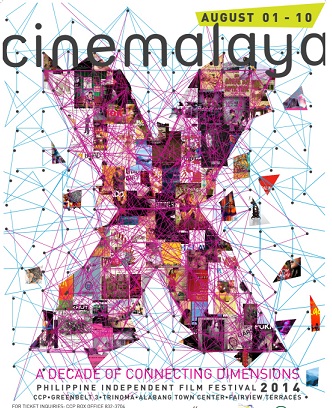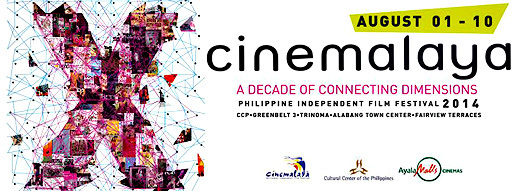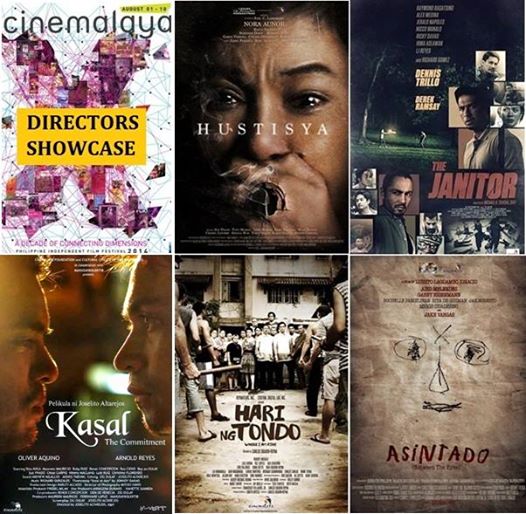By KATRINA STUART SANTIAGO
 I had started watching CinemalayaX with Carlitos Siguion Reyna’s Hari Ng Tondo, Joseph Alterejos’s Kasal, and Roderick Cabrido’s Children’s Show. It was two good movies out of three, and I thought it was portents of things to come for the rest of the week’s movie viewing frenzy.
I had started watching CinemalayaX with Carlitos Siguion Reyna’s Hari Ng Tondo, Joseph Alterejos’s Kasal, and Roderick Cabrido’s Children’s Show. It was two good movies out of three, and I thought it was portents of things to come for the rest of the week’s movie viewing frenzy.
After watching all 15 full length films, I realize I had it good that first day. It was downhill from there.
Staring in the mirror
This might be as old as movies itself, but the camera shooting a woman’s reflection as she looks at herself in the mirror was something that I saw too many women characters do in the films this year. From Biring in Hustisya, to Cory in 1st Ko Si 3rd, Imelda in Mariquina to Paloma in Ronda, among others. Even Divina in Bwaya stares a mother-crocodile in the eye much like a mirror. That this is what I remember speaks tons about this year’s festival offerings as a whole.
There was just too much tired, trite imagery here. From the long-drawn shots of the Issey at the beach in Dagitab, to those of Paolo and Sherwin on the road to nowhere in Kasal; from the chaos of Manila in Hustisya, and its darkness and order in Ronda, to the pretty and pointless lives of teenagers in #Y, there was just too little here that surprised in terms of treatment of material and the envisioning of a story. Even Bwaya and K’na The Dreamweaver, while delivering beautiful images were expectedly about selling the exotic in these spaces that few of us have been to. The images of violence in Janitor and Sundalong Kanin are also all we’ve seen before.
It’s not to say that we might not repeat images, and for sure directors dealt with old images and decided to layer it with a vision of a story that is different (Hari Ng Tondo’s take on poverty for example, or Children’s Show’s reconfiguration of the how and why of violence). But that was few and far between for this year’s festival.
Navel gazing
There were days when it felt like watching three movies was a ride through directorial self-indulgence, like watching someone stare at his (or her) navel, with the goal of revealing how things just are.
Which is to say there were stretches of nothing happening in these films. From a mother crying from beginning to end in Bwaya, to one searching for a son (but sleeps so soundly and misses her son’s coming home) in Ronda, from a story we knew would unfold the way it did in Asintado and The Janitor, to the one that decided to tell the most convoluted story of one woman’s psyche in Hustisya, there were stretches of time spent watching events that were pointless, or have missed the point entirely. But Dagitab must take the award for masturbatory film of
this festival, detailing as it did the life of a couple in the academe, University of the Philippines Diliman in particular, and reinforcing the old and tired belief in the ivory tower and the crazies that are there. That these two teachers are trapped in their own heads, is navel-gazing at its finest.
Here’s the problem with just how things are: its precondition is an amount of self-centeredness, a creative conceit, where the effort at engaging an audience, and bringing them into a narrative becomes secondary to the task of what a filmmaker wants to say. It might be said that all film – all creativity! – is self-indulgent and conceited. But if what is said has done nothing but create distance between creator and viewer, the film and the spectator, what then is the point of speaking at all?
The question of audience
This year’s Cinemalaya got me thinking about whether we get the movies we deserve, and what it is exactly that we contribute to lackadaisical filmmaking that’s passed off as artistic, or new.
Because Cinemalaya exists to remind us that we deserve better films than that which mainstream commercial cinema produces. It reminds us that there is creativity beyond the trappings of the business of culture, there are brilliant writers and directors who tell new stories or tell old ones differently, there are actors beyond those on TV, billboards, and popular film.
CinemalayaX failed to deliver on that. There were a few good films, but too many just reminded of how self-centered filmmaking can be. This year, this festival did not equal well-written and executed stories. There were nary complex stories here, as if these were sacrificed for the prettiness of conflicted landscape (Bwaya, K’na The Dreamweaver), if not the most simplistic portrayals (Kasal, #Y, Asintado). There were those that tried and failed to imbue the simplest stories with complexity (Hustisya, Ronda, Dagitab), and those that delivered exactly what we expect (The Janitor, Sundalong Kanin, Mariquina).
The most self-centered of these films (Bwaya, Kasal, Dagitab) were awarded by Cinemalaya itself. It’s a measure of the jurors’ taste for sure, if not their sense of the movies that Pinoy social media has liked. Practically every film also received an award from Cinemalaya, the awards night like a party where everyone got gifts.
One smells the stench of apologia. Cinemalaya had uploaded 28 films to its official website without consent from filmmakers. The institution now faces angry filmmakers ready to file a lawsuit.
On the year of self-indulgent film and creative conceit, Cinemalaya’s got one too many battles in his hands. It must also keep its own conceit in check.

